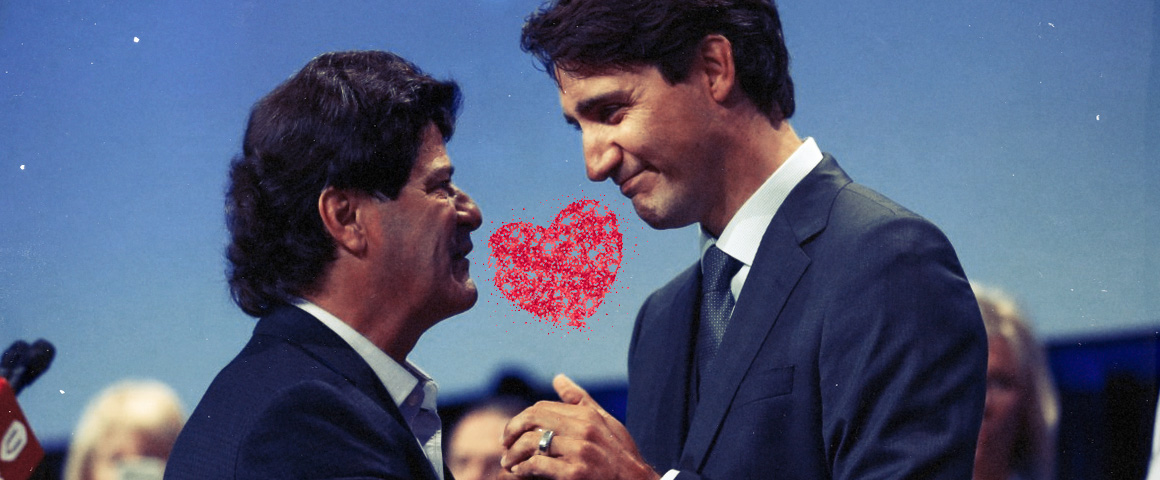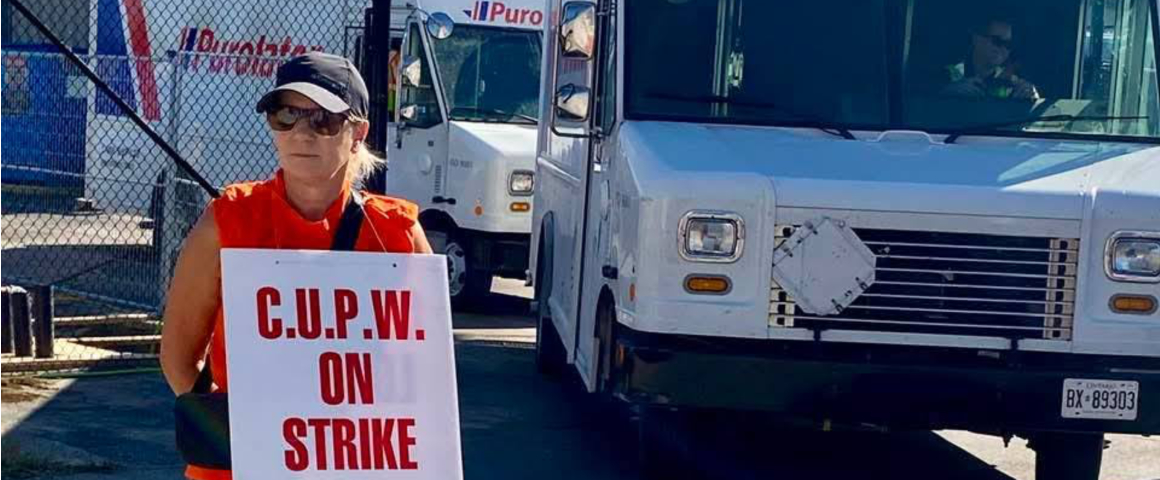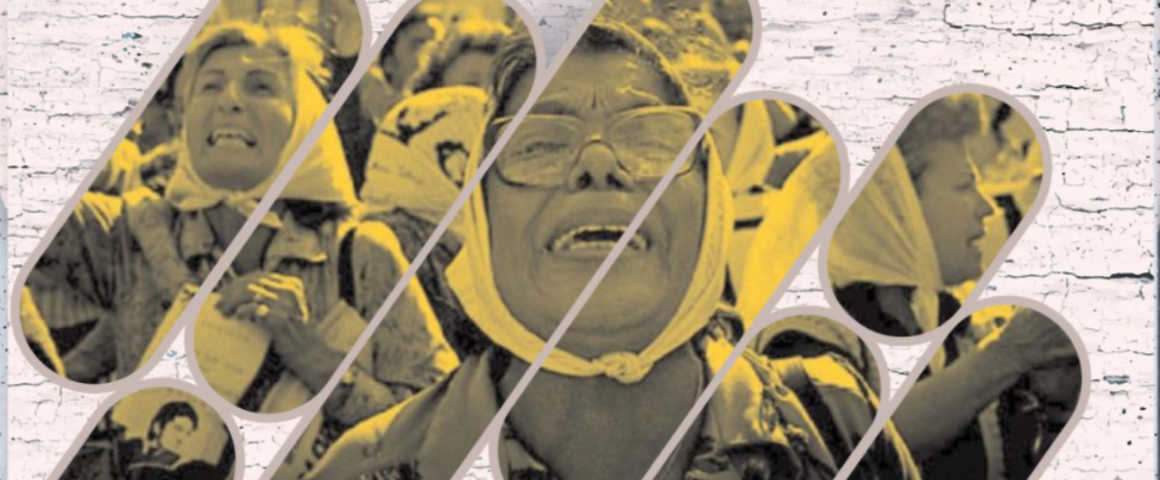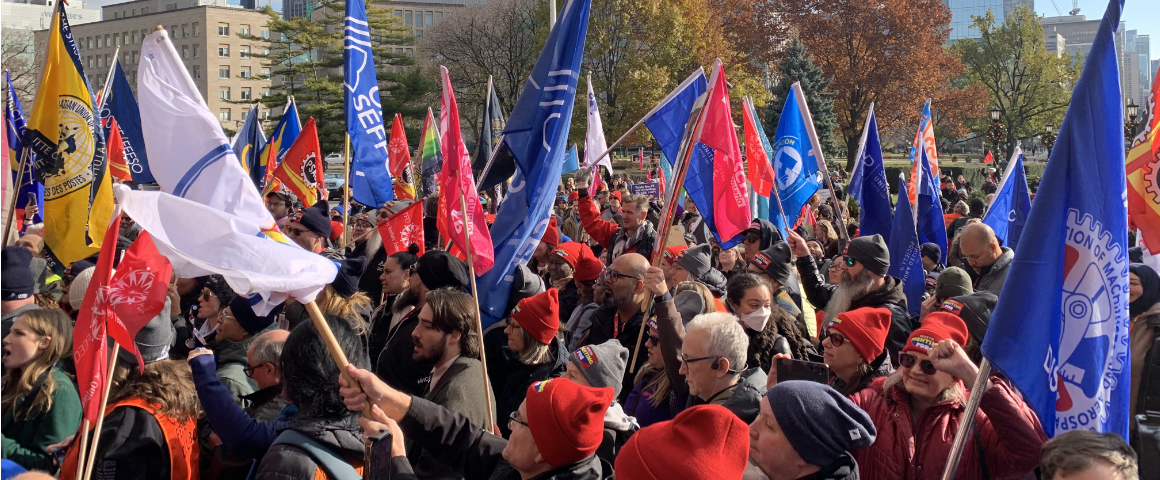Much has been written about the invitation from Unifor to Prime Minister Justin Trudeau to address the Unifor Convention on August 24. How could a union invite a pro-business Prime Minister to a convention, and how could he get standing ovations from the delegates?
This was the second time that Trudeau had addressed a Unifor event. He appeared at the Good Jobs Summit in October 2014, although he was not on the official agenda. When you walked into the old Maple Leaf Gardens, he was there to grab your hand and tell you he was so happy to meet you. Before the event started you could see him on the stage, surrounded by many of the attendees.
The event that night was a panel of economists, including Jim Stanford, to discuss different policy proposals to ensure Canadians would be able to find good full-time union jobs in an economy devastated by the Great Recession of 2008-9. It was the only occasion the whole weekend where participants were allowed to ask questions from the floor. While Trudeau was not in line, the moderator intervened to say that we had time for only one more question, and gave Justin Trudeau the floor. He stepped ahead of Libby Davies, who had lined up with everyone else.
Trudeau thanked the moderator and profusely thanked Jerry Dias for the invitation to attend the Summit. After blurting out a few more words, he asked the panellists for their opinions on infrastructure and education, two issues close to his heart. It was the first time he had spoken on any issue since becoming leader of the Official Opposition. (The crowd hissed when the moderator tried to close down the questions after Trudeau. Libby was allowed to ask her question about economic inequality in Canadian society. See People’s Voice commentary on “Unifor’s Good Jobs Summit: Tripartism on Display”, Nov. 1-15, 2014.)
The Unifor flirtation with the Liberals did not start with the lead-up to the 2015 federal election. In the aftermath of the 1988 election, then CAW President Bob White, who had travelled the country with Maude Barlow condemning the proposed Free Trade Agreement with the United States, wrote a stinging rebuke of NDP leader Ed Broadbent for allowing his party to play down “free trade” when it was the only issue in the election.
Following the 1999 Ontario election, when the CAW advocated strategic voting to throw out the Mike Harris Conservative government, the union commissioned a study of what its ongoing political position should be. That report called for the union to undertake its independent political position, not aligned to any party, which ended its automatic endorsement of the NDP.
Tensions came to a head when the NDP under Jack Layton withdrew its support for the Paul Martin Liberal government over the sponsorship scandal, which led to the 2006 election. Buzz Hargrove invited Paul Martin to the December 2005 CAW Council meeting, where he gave Martin a CAW jacket for having passed that year a “progressive” budget with NDP support.
When the election was called, the CAW endorsed Liberal candidates where the NDP did not have a chance to win. After the Harper Conservatives won a minority government, the Ontario NDP expelled Hargrove. When Bob White was asked about this, he said that given a choice between his party and his union, he would always choose his union.
Unifor has continued this policy of strategic voting since its inception. When the local representing NDP staff on Parliament Hill, a local coming from the former CEP, kept pushing for Unifor to endorse the NDP at its founding convention in 2013, President Jerry Dias refused. In the end, that local left Unifor and joined the United Food and Commercial Workers.
Since its inception, Unifor has adopted the CAW 1998 position in two important elections. In the 2014 Ontario election it and the Ontario Federation of Labour both participated in the Stop Hudak campaign. Tim Hudak, a former cabinet minister under Mike Harris, campaigned for the Progressive Conservatives on adopting anti-union right-to-work legislation and firing 100,000 public-sector jobs. Liberal Premier Kathleen Wynne was the party that ran ads defending unions’ right to exist, while the NDP focused on Liberal corruption. The first person to congratulate Wynne when she came off the stage at her victory party was Jerry Dias.
In the 2015 federal election, Unifor went all out to defeat Stephen Harper. Its 2014 Canadian Council endorsed strategic voting. Dias told the Toronto Star, “For us, we know that another four years of Harper will be disastrous for working-class people in Canada, period. So that in itself trumps going out there and putting support in a riding where we know that the New Democrats have no chance.”
What has made strategic voting seem plausible, given the political climate, was the consistent drift to the right by the NDP. Where was Andrea Horwath when Hudak took on the labour movement? Why did Thomas Mulcair address the Canadian Club in Toronto to assure Bay Street it had nothing to worry about from a NDP federal government? With his promise of a balanced budget in each year of his mandate, Mulcair made it easier for the Liberals to win a majority.
Fast forward to Trudeau’s address to the Canadian Labour Congress in November 2015, where he promised a “new partnership with Labour”, and then to his address to Unifor.
In his introduction to Trudeau, Jerry Dias denounced Stephen Harper as a Prime Minister who genuinely did not like Canadians. He pointed out that Harper stole the surplus from Employment Insurance to put it into the government’s general fund, in order to balance the federal budget. But Dias failed to mention that the robbery of what was then Unemployment Insurance to the general fund was started by former Finance Minister Paul Martin, in the 1995 budget where he was going to slay the deficit “come hell or high water.”
Trudeau’s speech was a dud. His main point was to reiterate his government’s new partnership with labour: “The labour movement has been essential to building a stronger economy, one that’s centered on the principles of fairness and inclusion, You hold employers to account, and that includes my government. You fight for the interests of the (sic) middle class, and you demonstrate a sense of community in everything you do.”
“We believe in partnership and collaboration,” said Trudeau. “We believe in renewing our relationship for the betterment of all Canadians. And we believe that Labour is a solution, not a problem.”
He cited his record since being elected. The only new initiatives he promised were to allow employees flexibility to schedule their working hours, and flexibility in parental benefits. He said nothing on the Truth and Reconciliation Commission; nothing about the Trans-Pacific Partnership; nothing on climate change.
Much has been made of the “numerous standing ovations” given Trudeau by the Unifor delegates. Two of them were after his introduction and when he finished. This was a courtesy given all the guest speakers. The only ones during the speech came when Trudeau said he kept his promises to put the retirement age back to 65, and to repeal the anti-union Bills C-377 and 525 which the Harper government passed just before the 2015 election, by having the Senate vote to violate its own rules of procedure.
His reception was nothing compared to the responses to Cindy Blackstock and Murray Sinclair, who were granted the Unifor Neil Reimer and Nelson Mandela awards respectively, for their advocacy for the indigenous peoples of North America. Standing ovations came every two minutes for them.
What will this bromance with the Liberals bring to the members of Unifor, and the Canadian working class as a whole? How often have the Liberals campaigned from the left and governed from the right? Have people forgotten that Pierre Trudeau lampooned the Conservative promise of wage controls with his slogan, “Zap you’re frozen”, in the 1974 election campaign, only to impose the very same attack on workers in 1975? Remember that Jean Chretien promised to improve the FTA in 1993, only to bring us NAFTA in 1994.
The test will come with the Trans Pacific Partnership. During the 2015 election debates, Trudeau said that while he had not seen the details of the TPP, the Liberals support trade. Trade Minister Chrystia Freeland signed the TPP in New Zealand last December, and Trudeau promoted free trade as the solution to the sluggish global capitalist economy at the recent C20 Summit in Hangzhou, China.
Unifor delegates unanimously passed a resolution to launch a campaign to oppose the TPP because it will cost jobs, allow the importation of milk with Bovine Growth Hormone, and threaten Canadian sovereignty by allowing corporations to sue governments if they pass laws or regulations that affect their profits.
Let’s hope Unifor will forget its “partnership” with the Trudeau government and follow through with its pledge to Stop the TPP.




